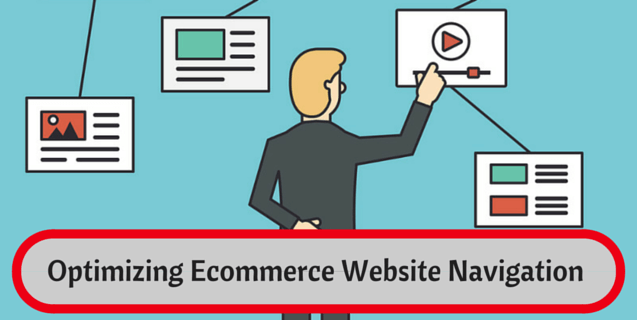You can walk into any Walmart store anywhere in the world and pretty much know where to find what you’re looking for. This isn’t an accident – it’s the science of marketing. Decades of research went into designing store layouts that encourage shoppers to spend money. While the Internet differs from brick-and-mortar in many ways, the science of encouraging shoppers to buy remains the same.
In the Internet age, leading potential customers where you want them to go is known as SEO, and the same link-building SEO best practices that lead consumers to your site will also motivate them to make a purchase. In order to create a relevant and credible ecommerce site, think like a shopper and follow these six best practices to optimize your site’s navigation.
Create Product Categories
Look above you in any brick-and-mortar store, and you’ll find signage labelling where products can be found. These signs are used in grocery, clothing, outlet, convenience, and any other type of store. Customers want to know how to find what they’re looking for without needing the assistance of sales staff. Without these signs, retail stores would need to bulk up their floor staff to handle navigational questions.
Online, navigation is even more important because leaving a site is easier than leaving a physical store. If a potential customer can’t find the product they’re looking for, they can’t purchase it and will navigate away from your site to give their money to your competitors. Sort products into categories and, if necessary, subcategories when creating product pages.
Be sure to list them under every relevant category a customer may potentially look for it under. For example, a tablet could be considered both home electronics and mobile electronics – listing tablets under both services customers looking for either use.
Feature Products and Deals
The first thing you’ll notice when walking into any retail store is the endcap displays. These featured items are placed at the ends of every aisle, at the front of the store, and near every register. Endcaps are hotspots that draw customers to look at products that may not have been on their initial shopping list. These items therefore have a faster selling rate than items located on shelves within the aisles.
Mimicking endcaps on an ecommerce site is as easy as creating a “Featured Product” category that remains static on the front page. The featured category is a common option in nearly all web design templates, especially ecommerce templates. Any products listed as featured will be seen first by any site visitors. This increases the likelihood a site visitor will click on the item, raising the chances of a sale.
Upsell in Product Descriptions
Retail associates are trained to upsell everything from similar products to accessories and product warranties. A common practice during holiday retail sales like Black Friday is to offer doorbuster products to get customers in the door, then upselling them. This increases overall revenue by increasing sales volume.
Ecommerce sites upsell in different ways. Take a look at Amazon – every product description page lists optional accessories, similar items you may also be interested in, and items bought by other customers who viewed the same product. This simple step increases sales volume for ecommerce sites the same way doorbusters help brick and mortar.
Display Shopping History
In Business 101, we learned the cost of acquiring a customer is higher than the cost to retain one. Brick and mortar stores offer VIP customer programs to encourage customers to return. These cards are used to track customer purchase habits to target ads, though the data is often hidden from the customer. What these stores can’t do (but ecommerce sites can) is display a history of items previously viewed and purchased. This gives customers a customized shopping experience that encourages purchases.
Post Product Images
It may seem obvious, but the more a customer can see of a product, the more likely they are to purchase it from an ecommerce site. Be sure to have multiple images of every product, showing as much detail as possible. People respond to visuals more than text, and are more likely to click an image to make a purchase. Edit the link URL for each picture to lead back to the product description page, where customers can learn more about the product.
Allow Purchases from Every Page
In a retail store, it’s impossible to find an exit that doesn’t have a checkout stand next to it (emergency exits don’t count). Online, people can leave a website from any page, so it’s important to always have an option to purchase from every page. Some customers need more information and will buy from the product description page – others will make an impulse purchase off only a thumbnail.
Be sure your ecommerce site has a “Checkout” button located on the sidebar of all pages at all times to ensure you never lose a sale.
Ecommerce site design can seem complicated, but it doesn’t have to be. Modelling after a brick-and-mortar shopping experience ensures your ecommerce site functions just like a brick-and-mortar store. By utilizing digital equivalencies of tried-and-true retail techniques like endcaps, doorbusters, product signage, and easy checkouts, your ecommerce site will be well on its way to becoming the next Amazon or Zappos. For more information on ecommerce website best practices, reach out to the SEO experts at Volume Nine.
